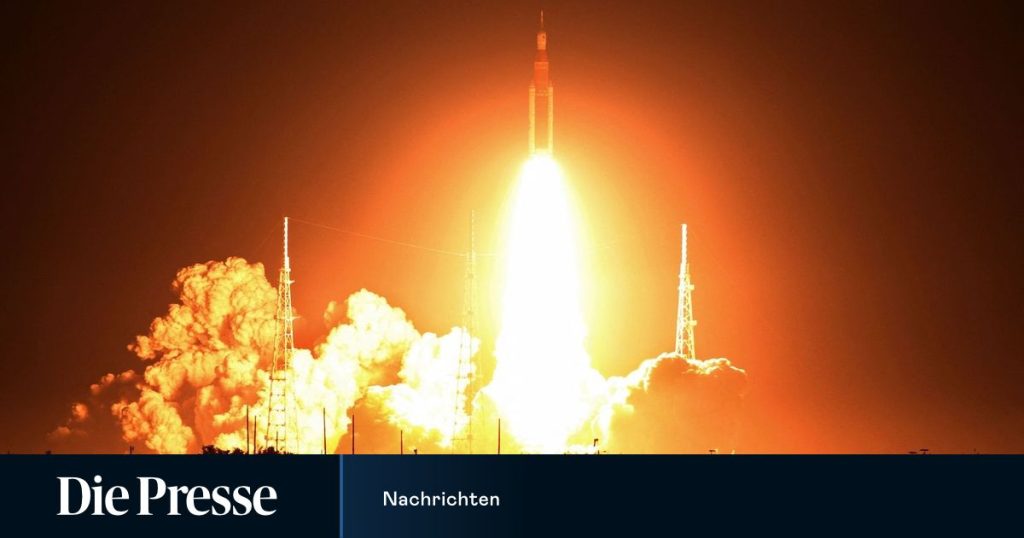Orion will be in orbit around the moon for about three weeks. The mission has not been under a good star yet.
After months of delays, NASA’s “Artemis 1” moon mission got off to its first test launch on Wednesday. With the Space Launch System rocket, the unmanned capsule “Orion” took off from the Cape Canaveral cosmodrome in the US state of Florida, as evidenced by live images from the US space agency NASA. Orion will be in orbit around the moon for about three weeks. The capsule is expected to return to Earth on December 11th.
The mission so far has not been going well: After delays and an explosion in development and construction costs, the first test launch had to be postponed several times – among other things due to two consecutive storms and various technical problems.
With the “Artemis” program, named after the Greek goddess of the moon, American astronauts are supposed to land on the moon again in the coming years, for the first time a woman and a non-white person.
The mission will initially take four astronauts into lunar orbit with Orion, where two of them will transfer to a lander for the final approach to the Moon. It is currently scheduled to start in 2025 at the earliest.
Forward site for the subsequent Mars mission
In addition, outposts will be built on and in orbit of the Moon, also as a basis for a subsequent Mars mission. Also the European Space Agency ESA Space agencies from several other countries are involved in the project, which currently has a cost of about $30 billion.
NASA placed the last human on the Moon in 1972 on the Apollo 17 mission. Overall, the United States was the only country to date in which twelve astronauts landed on the Moon with the Apollo missions between 1969 and 1972.
There are no people aboard the “Artemis 1” test mission, but two dolls – or “ghosts of astronauts”, as the German Aerospace Center (DLR) calls them: Zohar and Helga. It is a project with German and Israeli participation. It is being tested whether the protective vest developed in Israel can effectively protect the female body in particular from dangerous space radiation.
“Thanks to a sophisticated energy-saving strategy, the two ghosts survived the waiting time before take-off quite well,” said DLR. “Helga and Zohar are ready for the journey.”
(APA/DSPA)

“Food practitioner. Bacon guru. Infuriatingly humble zombie enthusiast. Total student.”








More Stories
Kyiv: Russian Kursk offensive halted
US Presidential Election: Former US Government Officials Warn Against Donald Trump's Election
Netherlands wants to leave asylum system